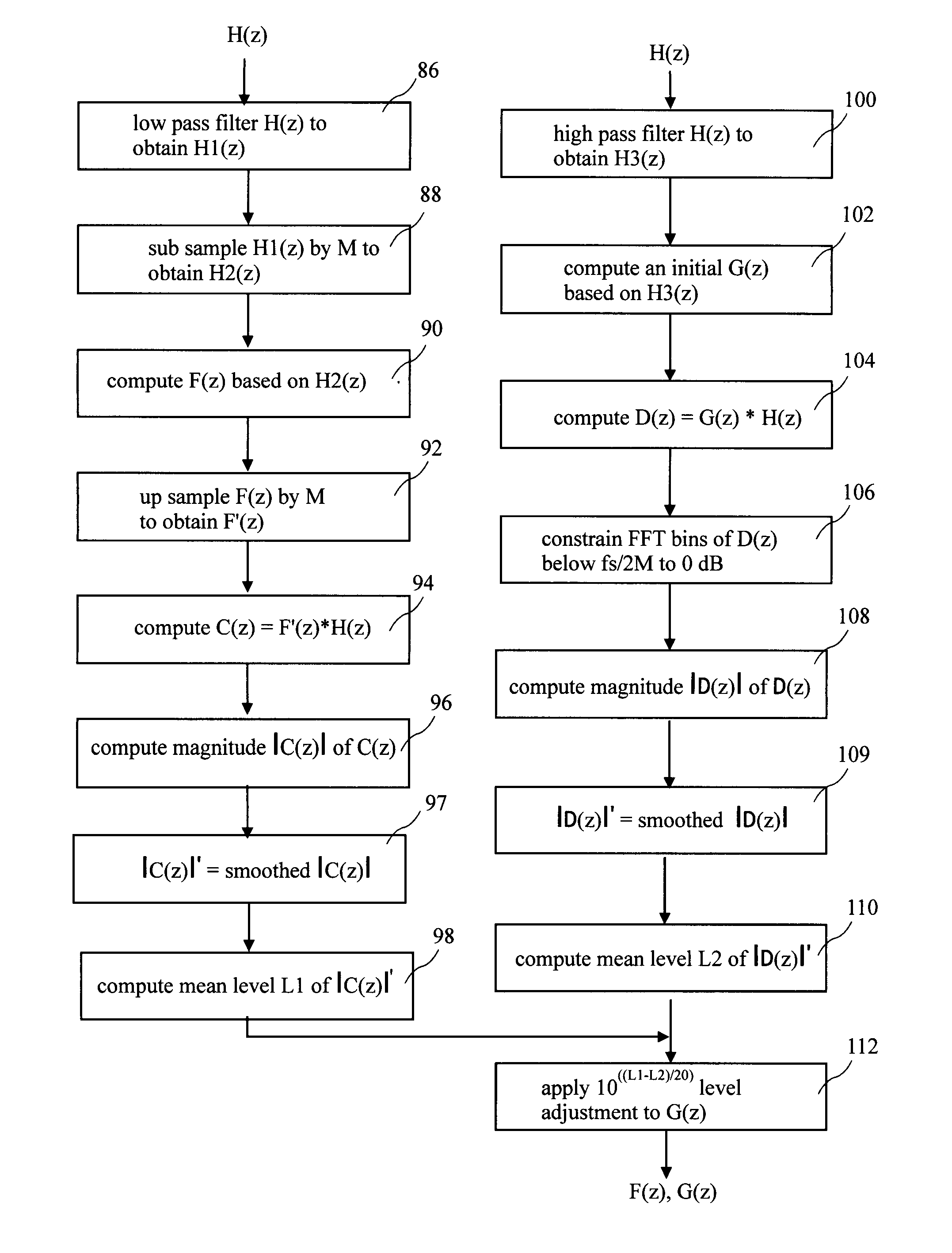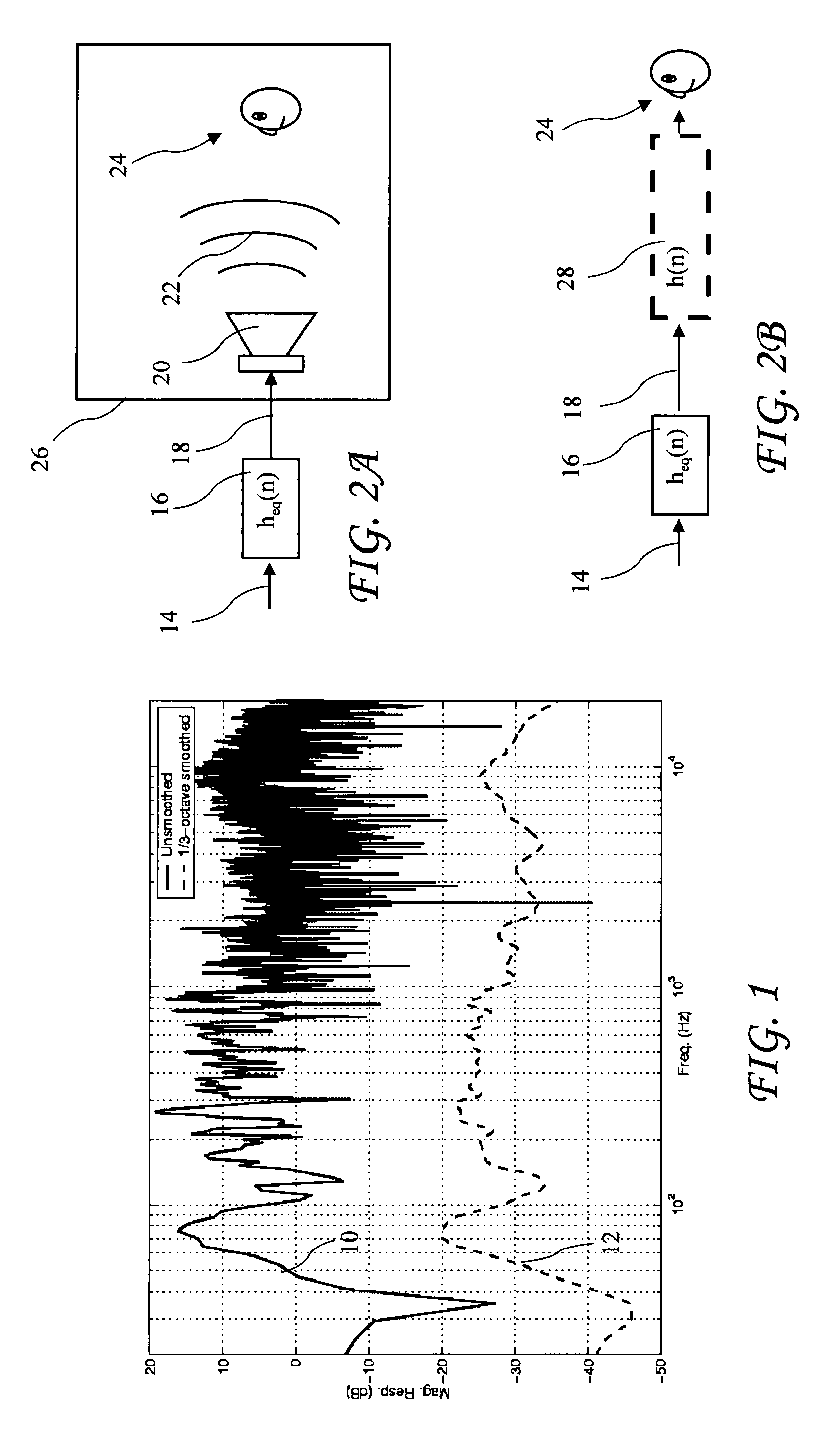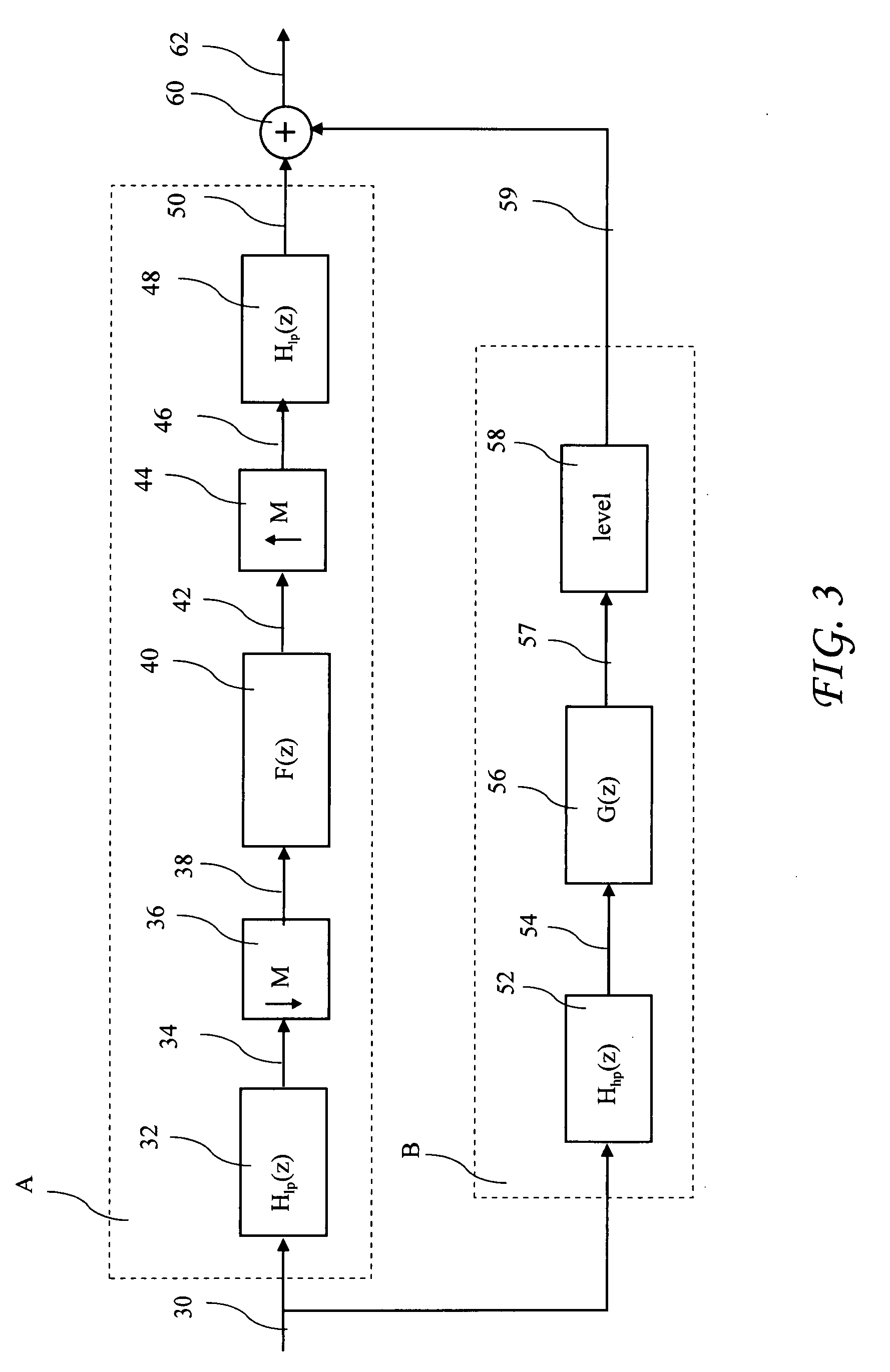Combined multirate-based and fir-based filtering technique for room acoustic equalization
a filtering technique and multirate-based filtering technology, applied in the field of acoustic equalization, can solve the problems of poor sound reproduction from the loudspeaker, the difficulty of the loudspeaker-room acoustic equalization, etc., and achieve excellent equalization, excellent equalization, and reduced computational complexity and signal processing requirements.
- Summary
- Abstract
- Description
- Claims
- Application Information
AI Technical Summary
Benefits of technology
Problems solved by technology
Method used
Image
Examples
Embodiment Construction
[0025]The following description is of the best mode presently contemplated for carrying out the invention. This description is not to be taken in a limiting sense, but is made merely for the purpose of describing one or more preferred embodiments of the invention. The scope of the invention should be determined with reference to the claims.
[0026]The present invention comprises the formation of an equalization (or inverse) filter, heq(n), which compensates for the effects of the loudspeaker and room which cause sound quality degradation at a listener position. In other words, the goal is to satisfy heq(n){circle around (x)}h(n)=δ(n), where {circle around (x)} denotes the convolution operator and δ(n) is the Kronecker delta function.
[0027]In practice, an ideal delta function is not achievable with low filter orders as room responses are non-minimum phase. Furthermore, from a psychoacoustic standpoint, a target curve, such as a low-pass filter having a reasonably high cutoff frequency ...
PUM
 Login to View More
Login to View More Abstract
Description
Claims
Application Information
 Login to View More
Login to View More - R&D
- Intellectual Property
- Life Sciences
- Materials
- Tech Scout
- Unparalleled Data Quality
- Higher Quality Content
- 60% Fewer Hallucinations
Browse by: Latest US Patents, China's latest patents, Technical Efficacy Thesaurus, Application Domain, Technology Topic, Popular Technical Reports.
© 2025 PatSnap. All rights reserved.Legal|Privacy policy|Modern Slavery Act Transparency Statement|Sitemap|About US| Contact US: help@patsnap.com



